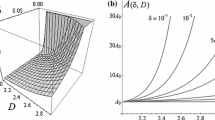Abstract
Based on the analysis of the field traffic flow time series, we found that there is self-similarity and periodic similarity in the traffic flow of different observation scales, which makes the short-term traffic flow prediction a meaningful work. For the purpose of finding the smallest prediction cycle, fractal analysis was conducted in the relation between the observation scale and the prediction cycle by using both the field data and the simulated data. We calculate the fractal dimension and the scaling region of traffic flow time series by using the G-P algorithm. If the scaling region can be found in the traffic flow time series at some observation scale, it means that there is self-similarity in the time series at that observation scale. The minimum observation scale at which there is self-similarity in the traffic flow is the smallest prediction cycle. This observation scale is a prerequisite for judging whether the traffic flow can be predicted or not. This research provides a reference for the short-term traffic flow prediction on expressway and urban road.









Similar content being viewed by others
References
Okutani, I., Stephamedes, Y.J.: Dynamic prediction of traffic volume through Kalman filtering theory. Transp. Res. B. 18B(1), 1–11 (1984)
Voort, M.V.D., Dougherty, M., Watson, S.: Combining Kohonen maps with ARIMA time series models to forecast traffic flow. Transp. Res. C. 4(5), 307–318 (1996). https://doi.org/10.1016/S0968-090X(97)82903-8
Smith, B.L., Demetsky, M.J.: Short-term traffic flow prediction: neural network approach. Transp. Res. Rec. 1453, 98–104 (1994)
Park, D., Rilett, L.R.: Forecasting freeway link travel times with a multilayer feedforward neural network. International Journal of Computer-Aided Civil and Infrastructure Engineering. 14, 357–367 (1999. special issue). https://doi.org/10.1111/0885-9507.00154
Davis, G.A., Nihan, N.L.: Nonparametric regression and short-term freeway traffic forecasting. J. Transp. Eng. 117(4), 178–188 (1991). https://doi.org/10.1061/(ASCE)0733-947X(1991)117:2(178)
May, A.D.: Traffic Flow Fundamentals. Prentice Hall, Englewood Cliffs (1990)
van Zuylen H.J., van Geenhuizen M.S., P. Nijkamp. (Un)predictability in Traffic and Transport Decision Making, vol 1685. Transportation research record, TRB, National Research Council, Washington DC pp. 21–28, 1999
Heinz-Otto Peitgen, H. Jürgens, Saupe, D.: Chaos and Fractals: New Frontiers of Science. Springer-Verlag, New York (1992)
Shang, P., Li, X., Kamae, S.: Chaotic analysis of traffic time series. Chaos, Solitons and Fractals. 25(1), 121–128 (2005). https://doi.org/10.1016/j.chaos.2004.09.104
Cheng, X.J., Liu, J., Ma, M.S.: Algorithm of short-term traffic flow prediction based on fractal theory. J. Transp. Syst. Eng. Inf. Technol. 10(4), 106–110 (2010)
Feng, W.D., Chen, J., He, G.G.: Study of the fractal phenomenon in traffic flow. High Technol. Lett. 13(6), 59–65 (2003)
Zhang, Y., Guan, W.: Empirical research of the fractal in the traffic flow time series. Journal of highway and transportation research and development. 27(5), 100–103 (2010)
Whitney, H. Differentiable Manifolds. Ann. Math 37:645–680, 1936
Takens, F.: Detecting strange attractors in turbulence. Lect. Notes in Math. 1936, 898 (1981)
Grassberger, P., Procaccia, J.: Dimensions and entropies of strange attractors from a fluctuating dynamics approach. Phys. D. 13, 34–54 (1984). https://doi.org/10.1016/0167-2789(84)90269-0
Acknowledgments
We are indebted to the Associate Editor and our three anonymous referees for their thoughtful comments that have helped substantially improve this work. This research has been substantially supported by the research grants from the National Natural Science Foundation Council of China (51408058, 51338002, and 51508041), and Open Fund of Engineering Research Center of Catastrophic Prophylaxis and Treatment of Road & Traffic Safety(Changsha University of Science & Technology), Ministry of Education, under grant number kfj130301.
Author information
Authors and Affiliations
Corresponding author
Rights and permissions
About this article
Cite this article
Zhang, S., Huang, Zx. Fractal Analysis of the Relation between the Observation Scale and the Prediction Cycle in Short-Term Traffic Flow Prediction. Int. J. ITS Res. 17, 1–8 (2019). https://doi.org/10.1007/s13177-017-0151-5
Received:
Revised:
Accepted:
Published:
Issue Date:
DOI: https://doi.org/10.1007/s13177-017-0151-5




